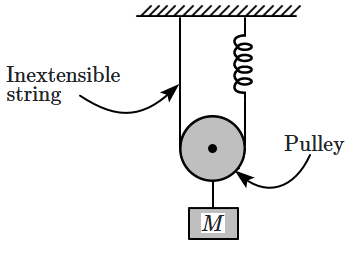A mass \(M\) is attached to a spring system as shown in the figure. If the mass is displaced from its equilibrium position and then released, what is the time period of its oscillation?

1. \(2\pi \sqrt{\dfrac{M}{k}} \)
2. \(2\pi \sqrt{\dfrac{M}{2k}} \)
3. \(2\pi \sqrt{\dfrac{M}{4k}} \)
4. \(2\pi \sqrt{\dfrac{2M}{3k}} \)

© 2025 GoodEd Technologies Pvt. Ltd.